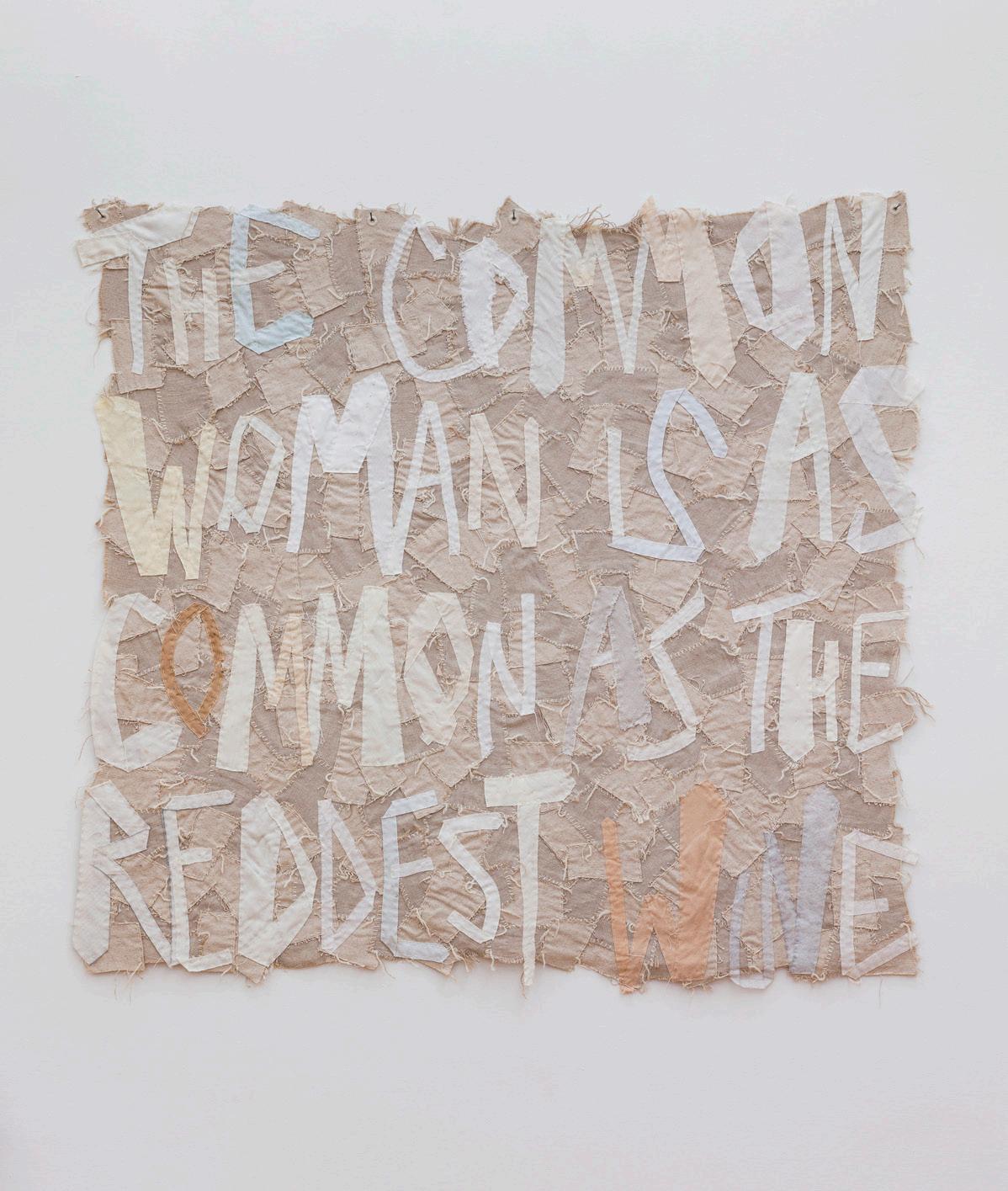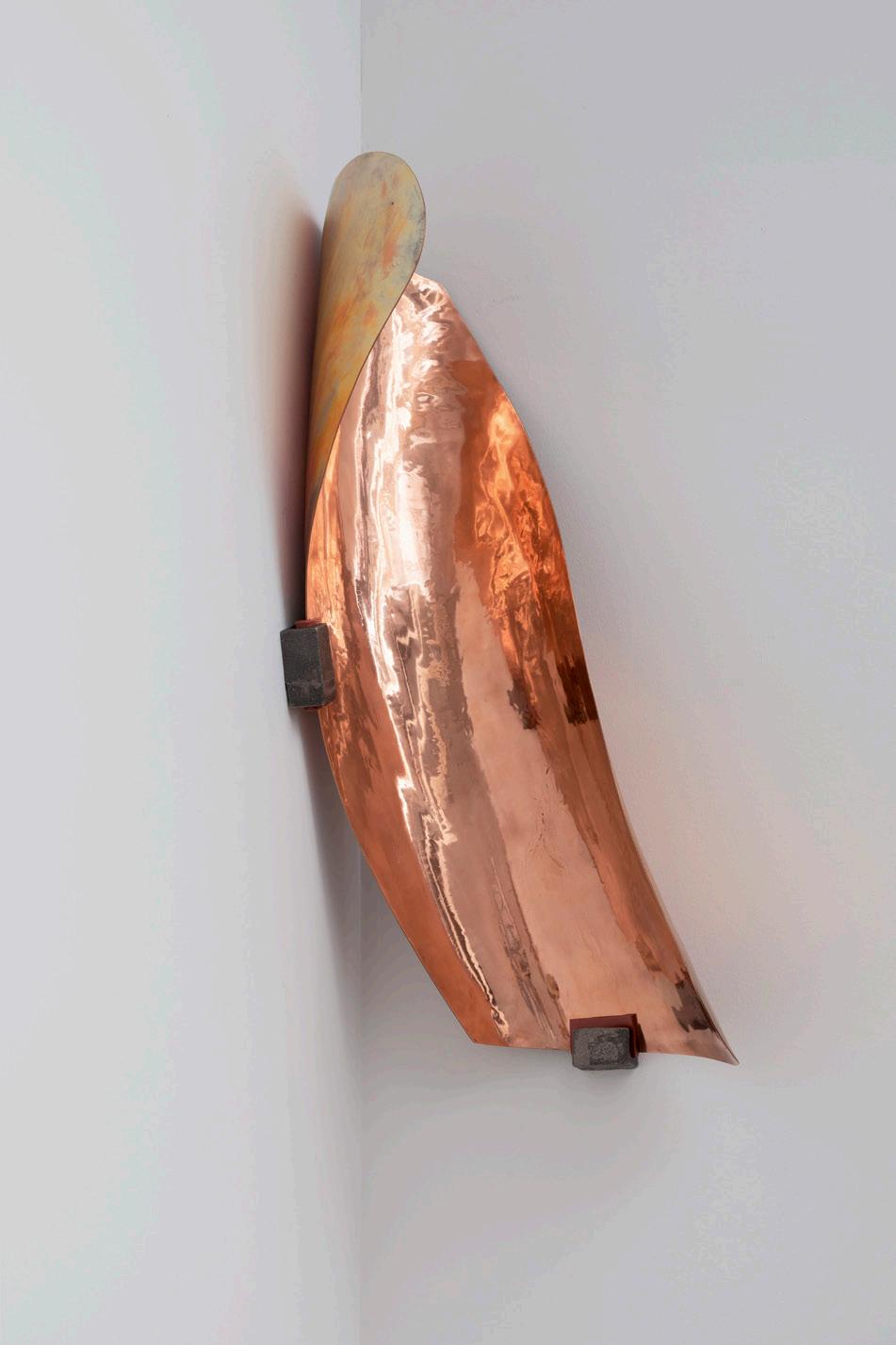
2 minute read
Conversation with Birke Gorm
Conversation with Birke Gorm as Noted by Marie Lund
Material gathered over time The time spent Attention given As small actions of care Not as something spectacular But as repeated activity Gathering the metal scraps On my way to the studio Daily Continues Repetitive As weaving As carving As a commitment to the material A conversation between the material and me A negotiation between what I want and what it wants Trying not to be forceful But to look at the possibilities of how to handle the material How to mould it in new ways As new kinds of observations and actions Modes of gathering, collecting, and sharing Formally and as narratives As containers and what is contained (…)
Advertisement
About the Common Crazies The Common Woman The crazy quilting A quilting technique Not based on a strict geometrical patterns Made from scraps Leftover material from garment constructed for the family Functional agricultural textiles With ornamental stitches that would take a lifetime to do And then Judy Grahn’s Common Woman Poems Depicting the common woman As simple objects As emotional states The ordinary connected woman Ordinary as normal Ordinary as collective As community Portraying female figures in everyday trouble In their working environment In their family situation Having too much responsibility Difficulties positioning themselves Taking on a male attitude Saying chest instead of breast (…) The common women As warriors With their strength and their fragility Small in size With the weight of a newborn Pregnant As in charged Rich in And physically with a belly attached Containing wheat grains Tied on to them Holding the gathered material As a tool kit As weapons (…) The sculptures as an infinite series That connects to the pace of collecting Having to travel to the sea to collect the pebbles And the metal picked up during the daily walks through the city Terracotta in all its different stages As unfired clay As bricks As washed-over pieces As decorative objects
Too small to be functional Some industrial Some handmade Displays the weathering and passing of time Relation to function and economy All from the ground The soil Picked up Returned to a ground level (…) The time spent making The time spent living Collecting the material And then the decisive moment When I commit to a material and a process Enter the stage of shaping Using that time to educate myself Thinking through movement Like when walking Thinking through something rather than about something While keeping the hands busy (…) And then the other making When you name something Position it When you pair an object and a word Listen to how it sounds When it is pronounced How it resonates with the surface of the object Thinking about the language through the object And about the object through the language Text and words as material As texture As weight Each letter made from found material Defines how it reads Gives it shape A materiality The reading and gathering of text Is absorbed and filtered Moved around and assembled Sampled Like materials Found objects Motifs Compiled Not calling my work mine But think of it as a way of collecting and filtering Gathering and absorbing ◻

Marie Lund, Heroes, 2020, copper, rubber and iron, 100 x 37 x 45 cm. Photo by Anders Sune Berg. Courtesy the artist and Galleri Nicolai Wallner











